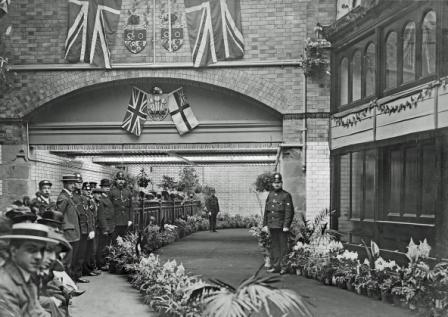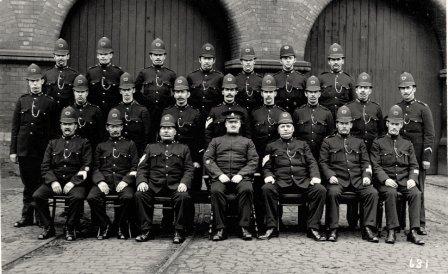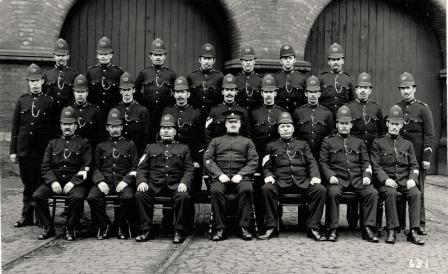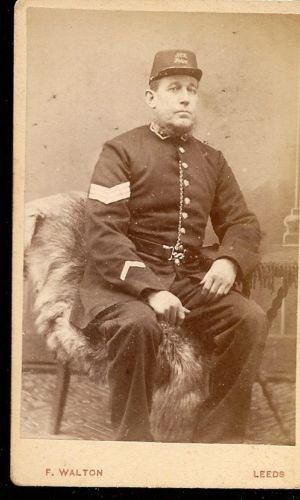-
Posts
76 -
Joined
-
Last visited
Content Type
Profiles
Forums
Blogs
Gallery
Events
Store
Posts posted by Polsa999
-
-
I have tried again!

 0
0 -
I am still trying to upload better quality photo's....so far no luck.
Getting close Nick.....I think that Mervyn was close to the date....and that it is a railway station.....Queen Victoria enjoyed using the Royal Train as did her son and grandson.....The title Prince of Wales was given to the male heir to the throne and the feathers may denote the presence of that person...did you notice the Naval Ensign? Looking at the clothes of the bystanders.....mens and womans hats indicate the 1910 to 1920 era...the absence of medals indicate that no war had recently been fought........
The second photo certainly could indicate a railway background, there are metal lines in the cobbles.....but everything is too clean for railway arches or engine sheds...could it be tramlines?
Another couple of days or so will give you all more time and I will try the upload again....can any one help?
Steve
0 -
If it helps...the helmet plates on the officers in both pictures do not have a crown...they are wreaths.....the centre is not quite discernable, however in the group photograph the Inspectors cap badge is a repeat of the collar badges on each officer. It looks like 3 oblongs coming from a hub....
Mervyn is very close to the date for the first photo, the scene with officers in it. Look at the flags and bunting...that may begin to provide a few more clues!
Steve
0 -
Hi Mervyn
Sounds good to me re the competition.....must ensure that they are the ones for which I have all the answers....it may have to wait until I can sort out how to upload within the file limits set for the site and still allow them to be seen clearly. Any suggestions.
When it happens, I suggest we ask for Force and for period give or take 10 years?
Steve
0 -
Hi Adrob
Although I did try, there is a limit on the size of a file which can be uploaded. I compressed the images so that they could be uploaded...is there a better way of doing this? If you right click on the photo it can be saved and then later opened to be viewed...this may work.
Thanks
Steve
0 -
I am a collector of police photographs, usually of the Met Police and the various railway police. My interest is mainly pre 1930's.
The first photo is of a scene with police officers in it and I wondered if any one can identify the Force and the location and perhaps even the event? After some reasearch I believe that I know the answer to this one.
The second one is a formal group photo of officers from a Force that I am unsure of....any ideas.
There are no prizes and in any case they are just interesting historical photo's in their own right.
Regards
Steve

 0
0 -
Brian
I have had confirmation from a member of our History Group
'So far as I am aware, our helmet plates were ‘multi-purpose’ (i.e. we only got the one!!) although I know that my local Forces, Coventry City and Birmingham City did have night and day plates. This is 1960’s of course. The old BTC plates (pre-1960) were black with a chrome BTC in the middle. Then came the black plate with the chrome circular middle piece with the ‘cat peeing up against the wheel’ as it was irreverently referred to. The chrome lettering around the ‘cat’ was British Transport Commission Police. We then moved to the black plate with the new Force shield but the lettering ‘British Transport Police ‘was in black as was the background to the shield. The next transformation was the same plate but all in chrome'
Regards
Steve
0 -
Thanks everyone for your input, it is much appreciated. What I do now is trying to trace the descendents of William Claydon - many thanks especially Odin.
Steve
0 -
The two badges were introduced after 1962 when the Force became BTP after 14 years of being the British Transport Commission Police. The first time that a railway police force did not follow the name of the railway company for which it provided a service. However the Cardiff Railway Company Police continued to call themselves the Bute Dock Police until amalgamation with Great Western Railway in 1922, having been absorbed in August 1897.
It was my experience, when I joined in 1970 that the chrome plate was the only one is use. Therefore the dark plate would have been used between 1962 and 1970. I have never researched the origins and use of the black plate, which I will do, but I do not believe it was used as a night plate....due to the chrome background to the force name.
Regards
Steve
0 -
Hi Guys
The attached picture is of a NER police sergeant, probably based in Leeds as that is the location of the photographer.
Does any one know when long service stripes were first used and when they were ended, also for what length of service were they normally awarded.
This is a CDV and the rounded corners indicate that it was produced after 1870 - I think that it was probably around 1880, note that there is no badge on the Kepi, merely the letters 'NER Police'. We believe that a metal badge was probably placed on the Kepi around 1880/90 and helmets replacing the Kepi at the turn of the century. I am sure that the NER police mimiced the local forces so any information about such changes would be useful.
Best wishes
Steve
 0
0 -
Hi Brian
Just to confirm that I am retired BTP but my last few years were in the Met. I am a member of the BTP History Group and currently manager for our Census Project. So if anyone has a railway police query (UK only) I may be able to answer it or one of my colleagues will.
Best wishes to you all
Steve
0 -
or who served in LPP?
Steve
0 -
Dave
Thanks again.......are you the Dave Wilkinson who served with Cumbria?
Steve
0 -
Thanks Dave
I must admit I thought that he was looking a bit old! The post card the picture is on can be dated as being between 1907 - 1915. Could he have come back for the 1911 Coronation or because of WW1? Also is their a nominal roll for these guys either at TNA or Empress Buildings does anyone know?
I am really pleased that he was a Met Office as I brought this on an impulse but my main interest is Railway Police in UK. with a sideline of Met CDV's, Cabinet and Post Cards.
I am equally pleased that I have found this site/forum and will enjoy it more and more.
Best wishes
Steve
0 -
In addition to the above, I realise that for the period in question, the officer had to have performed duty at the event, until the 1911 Coronation when the medals were issued on a Force basis. This should indicate that the officer was Met, not City, or would he have been on aide form a nearby force?
0 -
Hi Guys
This is my first post and it is a question. The photo is of an unknown officer who appears to be proudly displaying a Queen Victoria Jubilee medal with bar and a 1902 Coronation medal. At first I though that he may be a Met officer, but the Divisional letter appears to be 'O' with a number of 132.
I have tried to view the letter as either 'Q' or 'G' but I am certain that it is 'O' (not a Met Division).
Does anyone have any views whether this could be an officer from outside of the Met?
Thanks
Steve
PS Sorry for the image quality etc.....using someone elses computer
0




Guess the Force!
in Great Britain: Mervyn Mitton's British & Colonial Police Forces
Posted
Thanks Nick........you are correct photo number 2 is a group photo of a detachment of the North Eastern Railway Police taken obviously pre 1914, probably between 1905 and 1914....neat moustaches on most of the young men one or two without. Beards were popular generally up to the turn of the 19th century and many older men still continued to wear them. I think that the thought that the sheds were used for secure storage of wagons is probably correct. One wonders the reason for the photo which will require further research....two have 22 officers and an inspector all together would indicate a significant group - possibly even an entire establishment of police at one major railway station.
The first photograph was taken at Ashton under Lyne Railway Station in Lancashire in July 1913 during a visit by George V and Queen Mary, it may be that the Prince of Wales was with them or was visiting elsewhere......the police are all Lancashire & Yorkshire Railway police.
Thanks for your input.
To answer Mervyns request for some information about me....I am a retired BTP/Met officer, having started in the BTP in 1970 serving always in London and then the last few years util 2001 as an Inspector in the Met (Specialist Operations).
Regards
Steve